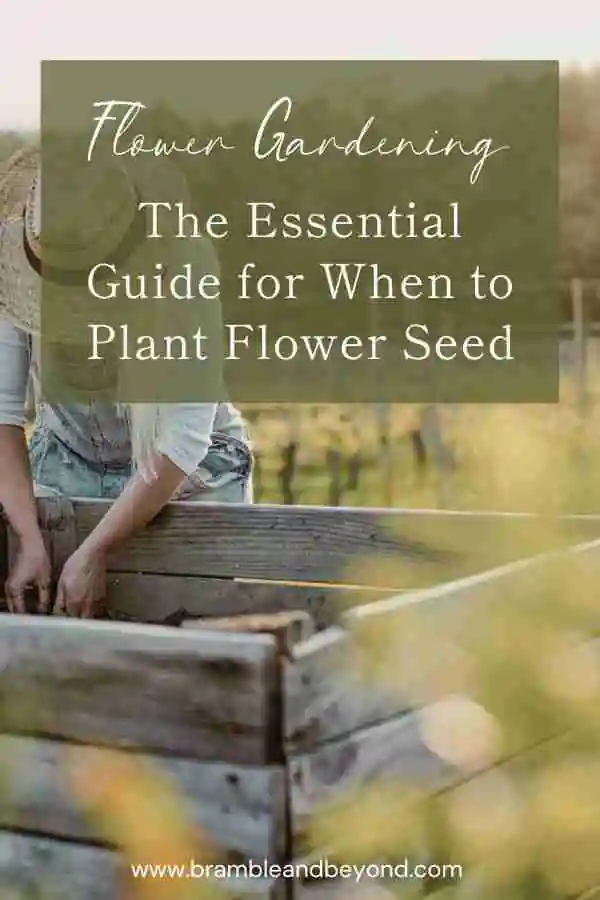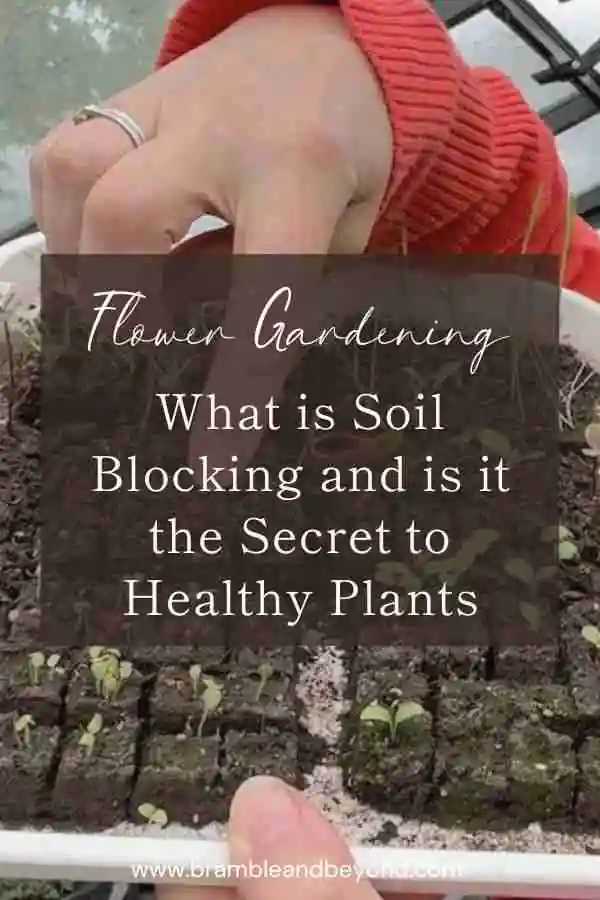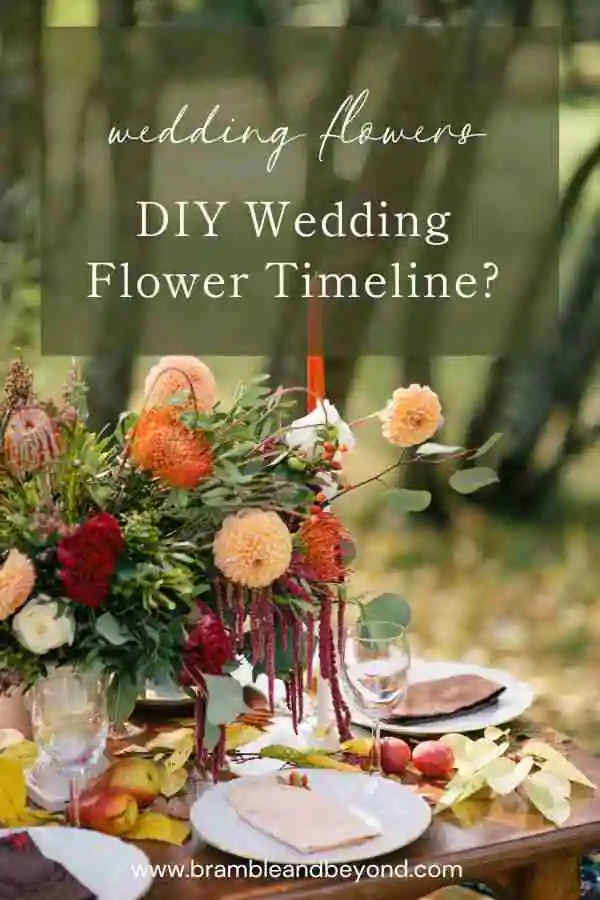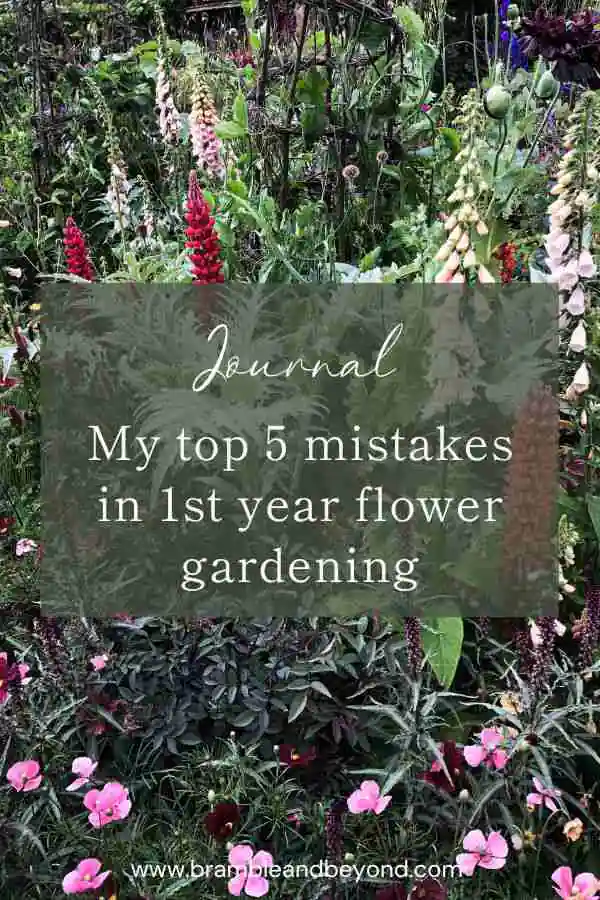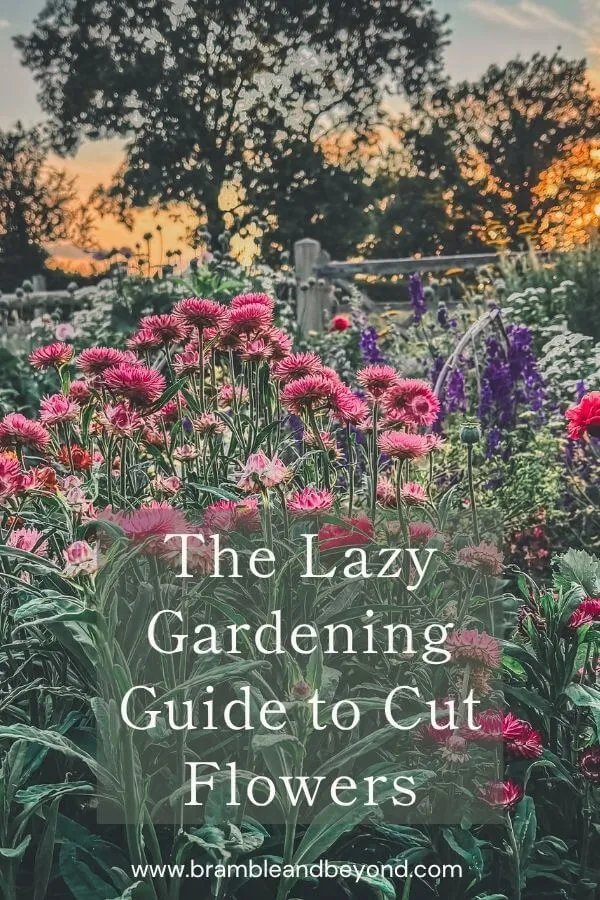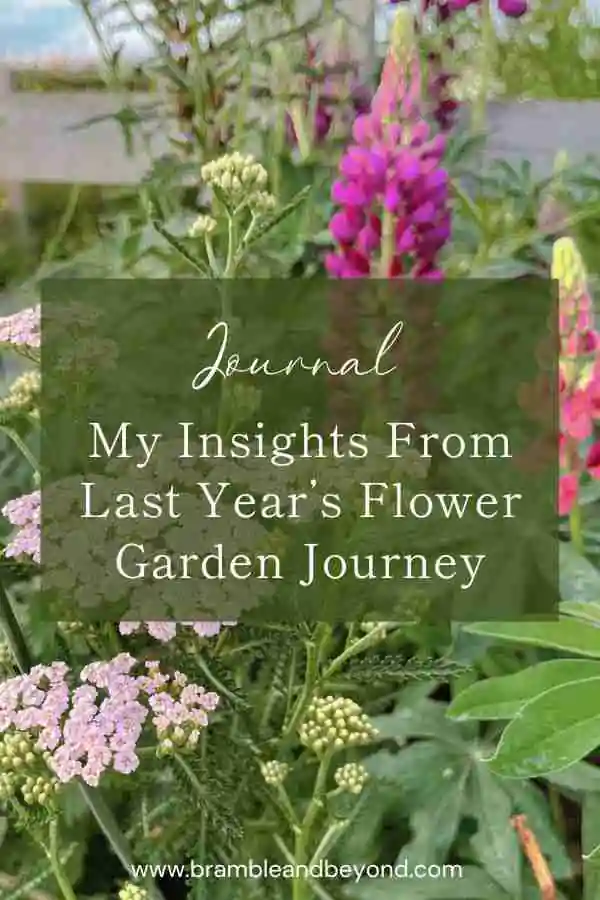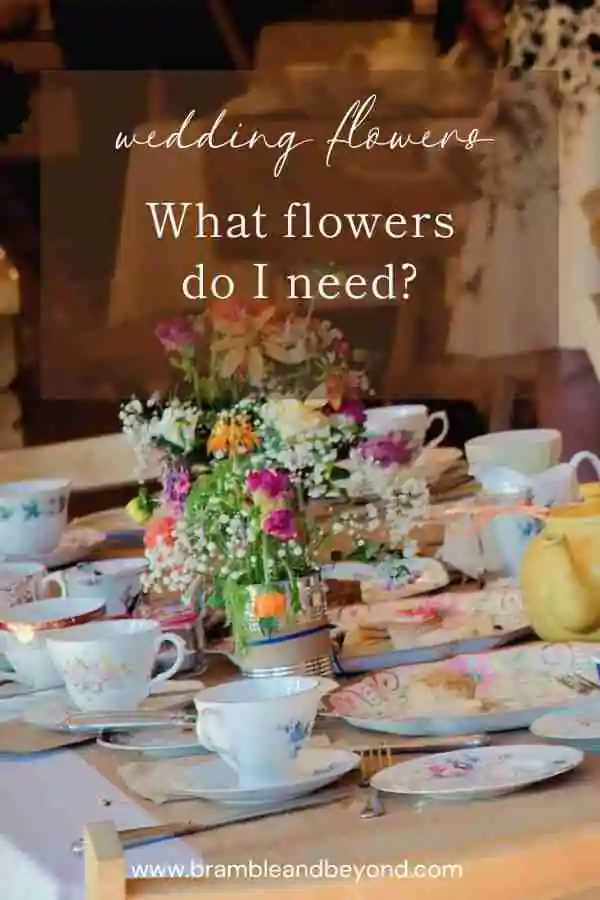Disclosure: This post may contain affiliate links, meaning I get commission if you decide to make a purchase through my links, at no cost to you. Please read my Affiliate Disclosure for more information.
If you’re looking to add a pop of colour to your home or surprise someone with a beautiful bouquet, planting your own flower garden might be just the ticket. However, getting started can feel a bit overwhelming, especially when it comes to knowing when to plant your flower seeds.
As a general rule, most seeds need about 10 hours of daylight to germinate and be planted out when all risk of frost has passed. Starting them earlier means the plants are deprived of these two vital factors; therefore, you could waste your seeds and time.
Timing is everything when it comes to flowers, and without a proper understanding of when to start sowing, you could end up with a garden that falls short of your expectations, or more specifically, a garden with no flowers! Fear not, though! In this guide, we’ll answer your most pressing questions about when to plant flower seeds so that you can easily bring a burst of floral joy to your garden.
Can you plant flower seeds too early?
One of the most common questions new flower gardeners ask is whether it is possible to plant their seeds too early. And while getting a head start on your garden is tempting, planting your seeds too early can have several negative consequences.
Firstly, most seeds require 10 hours of daylight to germinate, so if you plant them while your daylight hours are shorter than this, your seeds will germinate poorly. In the UK, it is usually around mid-February before there are enough daylight hours to start most seeds.
Secondly, if you plant your seeds too early, you risk exposing them to frost and cold temperatures that can stunt their growth or even kill them. This means you must spend more time protecting them from overnight frosts. Whereas if you hold off for a few more weeks, you will save yourself the trouble.
Thirdly, planting too early can result in leggy and weak seedlings that struggle to establish themselves in your garden. This is because they have to stay longer in compost cells, which can deplete them of the proper nutrition. So again, having your plants in plant pots for as little time as possible is better to give them the best start.
When to plant flower seeds
So, when is the right time to plant flower seeds? Depending on your climate and the type of flower you’re planting, the ideal time to plant your seeds can vary.
For example, if you live in a cooler climate, you may need to wait until late spring or early summer to plant certain flower seeds. On the other hand, if you live in a warmer climate, you may be able to plant your seeds earlier in the season.
For most flower seeds, March and April are usually the ideal time to get started in earnest if you live in the UK. Seeds planted at this time will soon catch up with any seedlings planted earlier in the season.
One helpful tip is to check the seed packet for specific instructions on when to plant each type of flower. Many seed packets will also include information on the ideal temperature range for germination.
Ultimately, exercising patience and waiting until the right time to plant your flower seeds is important. By doing so, you’ll give your seeds the best chance to thrive and produce beautiful blooms.
How early is too early to start seeds inside?
Starting your flower seeds inside is a great way to get a head start on the growing season. However, it’s essential to keep in mind that planting too early, even if it is inside, can be detrimental to your seeds.
For most people, starting seeds indoors 4-6 weeks before the last frost date in their area is a good rule of thumb. This will give the seeds time to germinate and grow into healthy seedlings before they are transplanted outside. However, anything earlier than this may result in your plants becoming too large or leggy before it’s time to transplant them outside.
It’s also important to consider the germination time of your seeds. Some seeds may take longer to germinate than others, so check the seed packet for the recommended germination time.
Additionally, remember that different seeds have different soil temperature requirements for germination. For instance, some seeds require a warmer soil temperature of around 21°C (70°F), while others may prefer a cooler soil temperature of about 15°C (60°F).
To start seeds indoors, you’ll need relatively few supplies, including seed starting trays or pots, potting soil, and a grow light or sunny windowsill. The main thing a new seed needs to germinate is heat and humidity, they don’t need light until they start to sprout and then they need lots of it. Be sure to keep the soil moist but not too wet and provide plenty of light as the seedlings grow.
Once your seedlings have grown a few sets of true leaves and the weather has warmed up, it’s time to transplant them outdoors.
Starting your flower seeds indoors at the right time with the proper conditions will give your seeds the best chance to grow and thrive. With patience and careful planning, you’ll be rewarded with beautiful blooms all season long.
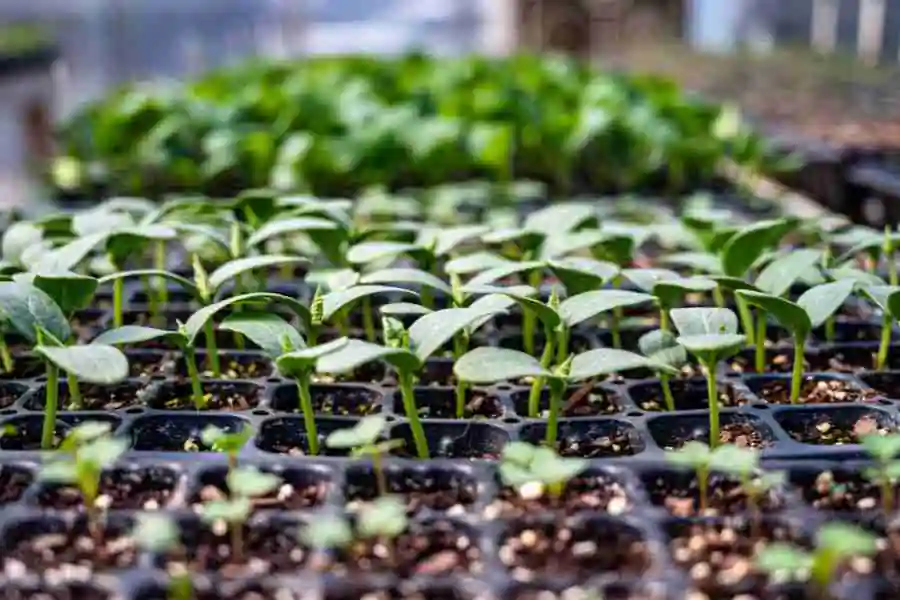
When to plant seeds outdoors
Planting flower seeds directly in the ground is an easy and efficient way to start your garden. However, there are a few things to remember when deciding when to plant seeds outdoors.
The timing for outdoor planting depends on your location and climate. In general, you’ll want to wait until the soil has warmed to at least 10°C (50°F) before planting. In colder climates, this may mean waiting until late spring or early summer. If you plant too early, the seeds may not germinate or may rot in the cold, damp soil.
You’ll also want to consider the average date of the last frost in your area. Wait to directly plant any seeds until after the last frost date.
In addition, many flower seeds require a long growing season, so it’s important to give them plenty of time to mature before the first frost of Autumn. As a general rule, you’ll want to stop directly planting your seeds at least 10-12 weeks before your average first frost date.
When planting seeds outdoors, it’s important to prepare the soil properly. Ensure the soil is well-drained and free of weeds, rocks, and other debris. You can also amend the soil with compost or other organic matter to improve its texture and fertility. The no-dig process is an ideal method that naturally creates the correct environment for your seeds.
Choosing the right seeds for your flower garden
To consistently enjoy fresh blooms, you can use various types of flowers, many of which have different planting and growing requirements. The main flower seed types are hardy annuals, half-hardy or tender annuals, and biennials. Each is best planted at different points in the growing season.
Half-hardy or tender annuals – These plants are planted, grow, flower, and die in one season. They are susceptible to frost and need protection in cold weather. It is best to start this group of seeds in spring (either mid to late) to minimise the risk of frost damage and take advantage of the ground warming up and more daylight hours.
Hardy annuals – Hardy annuals also grow, flower, and die in one season, but because they are hardy, they can tolerate some cold and frosty weather. This means that many of this type’s seeds can be planted in late summer/early autumn, allowing them to germinate and start to grow a healthy plant before they hibernate over winter. Then, once the temperatures warm up in spring, they will start growing again.
Many autumn-planted plants can remain outside over winter without too much trouble unless you live in a particularly cold climate. These seeds can also be planted in spring, but the spring-planted plants will generally flower later than the autumn-planted ones. So to create a constant harvest of hardy annuals, you can have some autumn-planted seeds that can be flowering in June and some spring-planted seeds that will take over the flower production in July and August.
Biennials – Biennials are plants that are sown in one year and flower in the second year. They can be sown in late spring or early summer, allowing them to establish into healthy plants before hibernating over winter. This prepares them to bloom in the following season, usually around the same time they were initially sown, such as late spring or early summer. Perfect to fill the gap between the spring bulbs ending and before all of the annuals start flowering. I like to plant biennial seeds on the summer solstice, June 21st, that way I have finished all of the annual sowing and it’s before I get to ensconced in the summer gardening jobs and forget all about them.
A sowing plan
If you’re looking to establish a cut flower garden and enjoy a continuous burst of colour from spring through autumn, it’s important to sow a mix of the three different seed types. This careful planning will ensure that your garden stays in bloom throughout the seasons and provides you with an abundance of beautiful flowers.
To help you get started on your gardening journey, the table below presents a simple plan for when to plant flower seeds if you are based in the UK, specifically in zone 8. If you are in the UK you can find out what zone you are in here, and if you are in the US you can find out your zone here.
By following this timeline, you can maximise the success of your flower garden and enjoy a vibrant display of blooms all year round.
| Month | Hardy | Half-Hardy | Biennial |
|---|---|---|---|
| February | Inside | ||
| March | Inside | Inside | |
| April | Inside | Inside | |
| May | Inside/Outside | Inside/Outside | |
| June | Outside | Outside | Outside |
| July | Outside | Outside | |
| August | Outside (for Next Year) | ||
| September | Outside (for Next Year) |
Knowing the optimal time to plant flower seeds is essential for establishing a consistently productive cut flower garden. This guide has provided you with the necessary information, from understanding the ideal sowing time to selecting the appropriate seeds for your garden, to embark on your gardening journey.
Remember, gardening is not just a science, it’s also an art, so feel free to experiment and enjoy the process. With these tips, you can ensure the success of your cut flower seeds and transform your garden into a beautiful and fruitful space.
So go ahead, get your hands dirty, and let your garden blossom!

